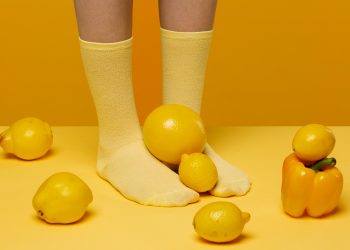The pulsing beats, the dizzying lights, and the sea of neon and glitter: welcome to the world of raves!
But raves aren’t just about the music – they have birthed an entire fashion revolution. Let’s take a rhythmic journey through time and witness the evolution of rave clothing fashion in the U.S. and the dance it danced with various music genres.
1. The Humble Beginnings: The 1980s Warehouse Scene
The rave scene, with roots in Chicago and Detroit’s underground clubs, brought forth an unexpected blend of fashion. The early raves, often held in warehouses, were clandestine events.
Fashion Highlights:
Baggy jeans and oversized shirts (often borrowed from dad’s closet).
Bright colors hinting at the neon revolution to come.
Athletic wear, thanks to the rise of sportswear brands.
Music Influence:
Early house and techno beats laid the foundation for rave culture, and the fashion was functional yet edgy, perfect for all-night dancing.
2. 1990s: Neon Nights and the Candy Kids
As raves moved from underground venues to more mainstream ones, the fashion saw a burst of color and creativity.
Fashion Highlights:
Brightly colored ‘candy’ jewelry (hence the term ‘candy kids’).
Wide-legged pants called ‘phat pants’.
Crop tops and tiny backpacks.
UV-reactive clothing, glowing under the blacklights.
Music Influence:
Trance, jungle, and drum and bass genres surged in popularity, further pushing raves into a fantastical realm, demanding an equally vibrant dress code.
3. 2000s: Festival Fever and Cyber Goths
The new millennium brought about mega rave festivals and the rise of the cybergoth subculture.
Fashion Highlights:
LED accessories and EL wire-laden costumes.
Cyberlox (tubular crinoline hairpieces) for the cyber goth fans.
Intricate face masks and bandanas.
Futuristic metallics and platform shoes.
Music Influence:
The addition of dubstep and electro brought an edgier, industrial vibe to raves, inspiring a blend of both punk and neon in rave attire.
4. 2010s: Mainstream Explosion and the Advent of ‘Rave Couture’
With events like Electric Daisy Carnival and Burning Man gaining worldwide attention, rave fashion began influencing mainstream fashion.
Fashion Highlights:
Elaborate headpieces and flower crowns.
High-end brands designing ‘rave-ready’ outfits.
Holographic clothing and accessories.
Face gems and intricate body paint.
Music Influence:
EDM (Electronic Dance Music) became a global phenomenon, with big names like Avicii and Calvin Harris pushing raves into the limelight. The fashion became as essential as the music, leading to a fusion of runway aesthetics with traditional rave gear.
Modern Day: Inclusion, Diversity, and Sustainability
Today’s rave scene is a melting pot of styles, reflecting the diversity and inclusivity of its attendees.
Fashion Highlights
DIY and upcycled outfits, echoing sustainability trends.
Gender-fluid clothing, breaking traditional norms.
A resurgence of vintage ’90s rave gear.
Incorporation of global and ethnic styles, representing the diverse rave community.
Music Influence:
Genres like psytrance, deep house, and techno are making waves, and with their global influences, rave fashion too has embraced worldwide trends.
Conclusion
Rave fashion, much like the music it grooves to, is ever-evolving. It’s a reflection of societal changes, musical trends, and the indomitable spirit of ravers. From the dark warehouses of the ’80s to today’s grand festival stages, rave fashion continues its journey, echoing the beats of a culture that refuses to be boxed in. So, whether you’re donning neon or glitter, remember, it’s all part of a rich tapestry of rhythm, dance, and self-expression. Here’s to the raves of the future and the fashion statements yet to be made!









